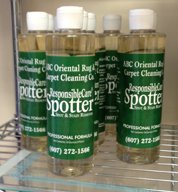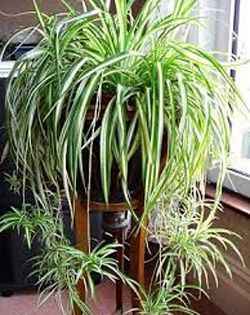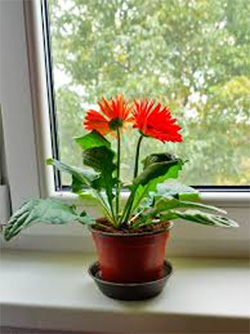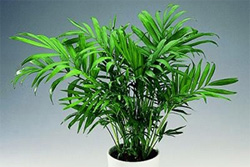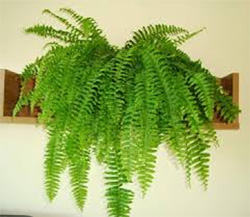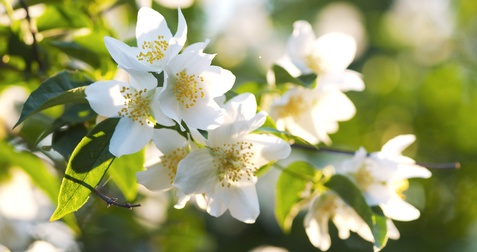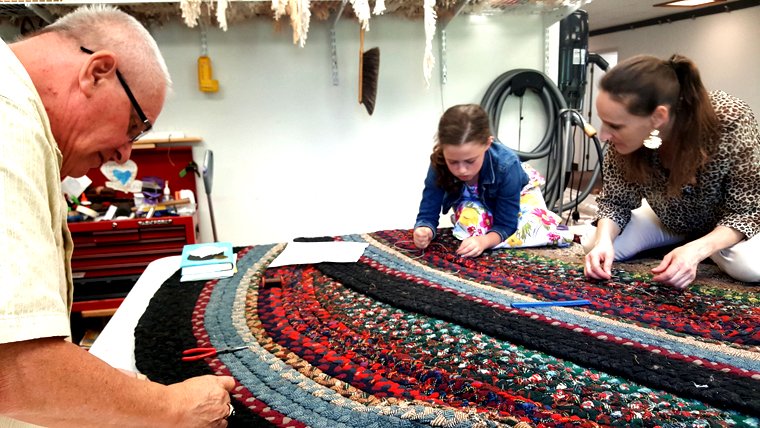AIR PURIFYING HOUSEPLANTS
Air purifying houseplants? Yes, very definitely. No one gets through elementary biology without learning about the ability of plants to convert the carbon dioxide we exhale to the oxygen we cannot do without, converting light to food during the process of photosynthesis.
But there is more to some of these amazing plants, especially the ones that are able to remove certain toxins from our indoor environment. These are the air purifying plants.
Please note: Some varieties can be toxic, especially if ingested by humans, dogs, and cats. In this article we will focus on the non-toxic varieties. For homes without pets or small children, please see Toxic Purifying Houseplants.
PHOTOSYNTHESIS and RESPIRATION
The processes of photosynthesis and respiration are reactions that complement each other and occur in reverse. In simple terms, living organisms supply plants with carbon dioxide. The plants use the carbon dioxide to produce their food and release oxygen which all living organisms need for respiration.
Photosynthesis actually takes place in the leaves of plants which are made up of very small cells called chloroplasts. Each chloroplast contains a green chemical called chlorophyll. The chlorophyll absorbs the sun’s energy. This energy is used to split the H2O water molecules (from the roots and stems) into hydrogen and oxygen. The oxygen is released into the atmosphere and the hydrogen and carbon dioxide are used to form glucose or food for plants.
AIR PURIFYING HOUSEPLANTS AND
INDOOR AIR QUALITY
Houseplants don’t actually exist in nature. Their ancestors once grew wild in the rain forests, deserts, woodlands, or prairies. As indoor plants, they have been forced to adjust to totally new conditions. Their root systems are no longer deep enough to seek water and nutrients and there is no rain to clean their foliage.
They are totally dependent upon us for their care and watering. But that is a small fee to pay for the enormous favor many of them do for us by purifying our indoor air quality.
Some of the harmful toxins a number of houseplants have the ability to absorb from the air in the home and work environment include Toluene, Xylene, and Styrene, as well as carbon dioxide, carbon monoxide, nicotine, radiation, bacteria, and viruses.
INDOOR AIR QUALITY
In our homes as well as our businesses we can be continuously bombarded by contaminants that may harm us.
There are at least 350 common toxins found in the home. These include Benzene, Formaldehyde, Acetone, Carbon Tetrachloride, Chloroform, Dichlorobenzene, Ethyl Acetate, Methylene Chloride, and many more.
These toxins come from the building materials and products we use every day. Technology, also, has its dark side once we are made aware of the number of contaminants and the amount of radiation emitted by just our computers, tablets, and smartphones, even our TVs.
BENEFITS OF AIR PURIFYING HOUSEPLANTS
When we bring certain houseplants into our home and work environment, they can not only be used for their ability as air purifying houseplants but they can also provide many other benefits such as:
- Reduced stress
- Less anxiety
- Better smell
- Headache relief
- Boosted mood
- Cold/illness prevention
- Improved brain function
- Improved sleep
WHICH ARE THE BEST AIR PURIFYING HOUSEPLANTS?
Listed below are the top five plants known to be the best air purifiers as well as being non-toxic for use in homes with pets and small children.
Spider Plant (Chlorophytum comosum)
The spider plant, also known as the airplane plant, is one of the easiest to grow and regrow and one of the easiest to care for houseplants. They thrive in cool-to-average home temperatures and prefer dry soil while growing best in bright, indirect sunlight.
The spider plant battles Benzene, Formaldehyde, Carbon Monoxide and Xylene (a solvent used in the leather, rubber and printing industries).
The spider plant is considered a safe houseplant. Unfortunately, dogs and cats seem to like the taste of the leaves and they could get sick if they eat too much of them.
Gerbera Daisy (Gerbera jamesonii)
The Gerbera Daisy is a bright, flowering plant which needs lots of light, a well-drained soil, and misting a couple of times a week. It should also get at least 6 hours of direct sunlight every day. As an added benefit, their large, bright blooms have been known to last as long as 2 weeks after cutting.
Gerbera daisy is effective at removing Trichloroethylene, which may come home with your dry cleaned items. It can also filter out the Benzene that comes with inks.
This is a safe plant for homes with pets.
Bamboo Palm (Chamaedorea sefritzii)
This plant is also known as a Miniature Fish Tail, Dwarf Palm Parlor Palm, Reed Palm, and Good Luck Palm.
The Bamboo Palm only grows to about 5-7 feet tall. It thrives in shady indoor spaces and often produces flowers and small berries. It prefers humidity, bright indirect light and should not be over watered. It does best in temperatures of 65 to 80 degrees.
This plant is at the top of the list of plants best for filtering out both Benzene and Trichloroethylene. It is also a good choice for placing around furniture that could be off-gassing Formaldehyde.
The Bamboo palm is non-toxic but beware the Sago Palm. Its seeds are especially poisonous and very tasty to animals.
BOSTON FERN (Nephrolepis exalta bostoniensis)
Boston Ferns will do best in a potting mixture of peat moss, sand, and garden soil. They should be kept in a cool place with high humidity and indirect light.
This plant removes a number of various chemicals from the air.
The Boston Fern is safe for homes with cats and dogs but beware the Asparagus Fern which has poisonous berries and do not use Boston Ivy around pets.
JASMINE PLANT
Not all Jasmine flowers are fragrant, but Jasminum polyanthum, the variety commonly used when growing Jasmine indoors, has a sweet aroma that is particularly fragrant at night.
Indoors, the plant likes a cool temperature and can tolerate up to 4 hours a day of direct sunshine from late Spring through fall. Direct sunshine should be decreased in winter. It likes a porous soil and is fast-growing so may need support.
It is non toxic and the smell may be able to help improve the quality of sleep as well as alertness and productivity the next day. Just smelling this plant may help to reduce anxiety and stress.
OTHER AIR PURIFYING HOUSEPLANTS
As noted above, there are many other air purifying houseplants but they are not recommended for households with cats, dogs, or small children because of they can be toxic, causing a wide range of symptoms, especially if ingested.
Please see Toxic Air Purifying Plants for more information.
Top of Air Purifying Houseplants
"The Cleanest Clean You've Ever Seen."
by
ABC Oriental Rug & Carpet Cleaning Co.
130 Cecil Malone Drive Ithaca, NY 14850
607-272-1566
GIVE THE
GIFT OF CLEAN!

Why not think 'outside the box' and give
a Gift Certificate for professional carpet, upholstery, or tile
& grout cleaning from ABC for any special occasion!
Does a special person have a favorite area rug or oriental rug that needs cleaning or repair? Just give us a call. You'll make their day!
Bring in the mats from a car and we'll clean them as well.
Contact
us if you live in the Ithaca, NY or surrounding areas and we will
tailor a special gift certificate just for you for any Special Occasion.
We would love to send our monthly newsletter directly to YOUR INBOX.
Just sign up below...
(Your email is safe with us. Your privacy is our priority.)
ABC Oriental Rug is on Facebook!
We regularly post tips and information about your carpet, rugs, upholstery, and tile and grout so please visit us often.
We update our Facebook page with our latest discounts and we are also offering exclusive promotions to our Facebook fans.
These are limited and short notice promotions.
"Like Us"
on
Facebook
and find out
what's going
on!

Vanessa Adams
Owner of ABC
130 Cecil Malone Drive Ithaca, NY 14850
For directions, Click Here.
OPEN:
Mon through Thur-8am to 5pm, Fri-8am to 4:30pm
Weekends-Saturdays-10am to 1pm

ABC
Carpet & Rug
Spotting Guide
Did you know that our ABC Responsible Care Spotter can get those pesky spots out of your carpet and will work equally as well on your clothes and upholstery?
Stop by our office and pick one up. They are $5.00 + Tax but if you have carpets or upholstery cleaned in your home or business, just request a free one from your Technician.
And don't forget to fill out the form above to download your free ABC Spotting Guide!
